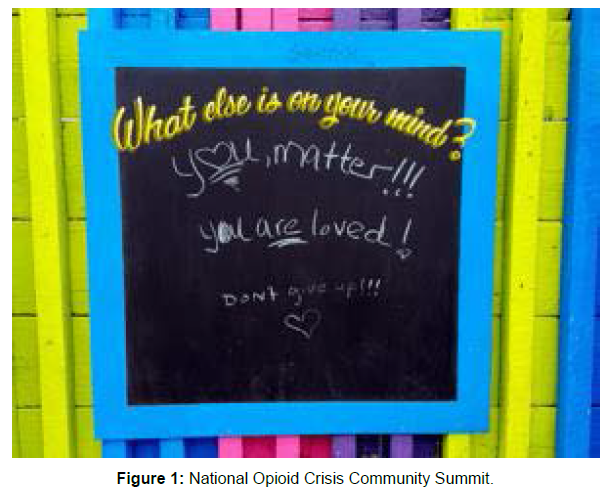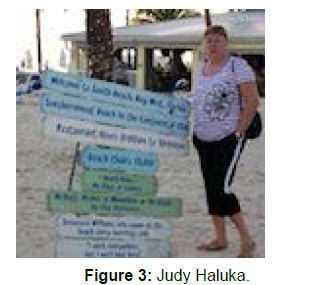Opioid Crisis - The Victim of a Created Crisis - Left Behind
Received: 04-Apr-2022 / Manuscript No. jart-22-61541 / Editor assigned: 06-Apr-2022 / PreQC No. jart-22-61541 (PR) / Reviewed: 20-Apr-2022 / QC No. jart-22-61541 / Revised: 22-Apr-2022 / Manuscript No. jart-22-61541 (R) / Accepted Date: 25-Apr-2022 / Published Date: 29-Apr-2022 DOI: 10.4172/2155-6105.100465
Expert Review
Indrid-Cold
It is not news to anyone that there is an opioid crisis in America. Something needs to be done quickly to reduce the number of valuable lives lost daily. People are dying: The young, the old, and those in between. There have been just north of 68,000 overdose deaths in the United States in 2018. This is the largest healthcare crisis in America. You will not hear objections to finding definitive answers to this real problem. However, those answers should not cause another crisis [1].
Caught in the Crossfire
I want to share the story of a friend who is a victim of the opioid crisis, but not in the way most are accustomed to thinking of people involved in this catastrophe. Diane is 68 years old and has been healthy most of her life. Then, in 2007, she was hit by an out-of-control teenage driver on an interstate highway. She had a fractured femur (the long bone in the upper leg) and a broken hip. She underwent surgery for her injuries that seemed to have gone well. Understandably, she was in a lot of pain [2]. Her surgeon gave her Percocet® 325/10 (acetaminophen 325mg/hydrocodone 10mg) to help her deal with post-surgical pain to participate in her physical therapy. She went from taking four each day down to one tablet every once in a while when she was very uncomfortable. Everything was improving until she woke up one day with a fever and increased pain in her right hip. The pain had not completely gone away from either injury but was improving every day. She had not been taking narcotic pain relievers for over a month.
Everything Changed
She did not realize on her way to the emergency department that her life was about to turn upside down. It turns out that she had a raging infection in her new hip that attacked the bone and was threatening the entire joint.
The hip would have to be removed. There was only one explanation for her new predicament: A hospital-acquired infection. Following many weeks of antibiotic intravenous therapy at home, the surgery to remove the hip was successful [3]. She had to function without a hip for about three months until her medical team was sure that the infection was completely gone.
Healing from a Critical Surgery
She was unable to get out of bed for two weeks and even after that she could not bear any weight on her hip. The pain involved in this kind of injury is excruciating. She was referred to a pain clinic physician, an anesthesiologist with specialized training in pain control, to get her pain under control.
She was placed on long-acting opioids (Oxycontin® 10mg, twice a day) and given oxycodone 5mg for breakthrough pain, that means her pain worsens, despite the pain medication. This was standard practice at the time. Patients who would require the use of narcotics long term were routinely placed on long-acting narcotics.
She underwent four additional surgeries. Despite her surgical trials, the new hip was never quite right. She developed arthritis in the hip from multiple surgeries, and experienced many other issues.
Chronic Pain Management
She suffered from what the medical world refers to as “chronic pain”. This patient has significant pain on a daily basis, but no real options from the medical or surgical world to correct it. Pain specialists thought at the time that chronic pain patients would probably be on some type of narcotic for the rest of their lives [4].
Chronic narcotic use was not necessarily negative, as “physically dependent” does not hold the same risks as the addiction that kills so many these days. Addiction is where folks get into trouble with abusing medications, increasing doses quickly, drug-seeking behavior, or overdose.
But in Diane’s case, she was monitored closely by the pain clinic who would ensure that she was taking her medication only as directed and did not increase the dosage beyond what is expected with normal tolerance issues. Things were going well.
Enter the Opioid Crisis
It is now 12-years-later. She remains in follow-up with the same pain clinic, although the original physician is long gone. She faithfully submits to drug tests, medication reconciliation, and she has never missed a pain clinic appointment. Although in some pain, each day is manageable while taking medication.
There is no doubt she is physically addicted to opioids, evidenced by the fact that she gets signs of withdrawal, like stomach pain, diarrhea, or irritability if she misses a dose by even a couple of hours. But until now, no one has been concerned because the belief is that she will continue to take the medication forever [5].
Until now, she showed up for her pain clinic appointment and was informed that she is going to be weaned off narcotics over the next month because of the new restrictions on prescribing narcotics. She has suddenly plummeted into a world of withdrawal symptoms, and even after the symptoms are gone her pain will be back to where she started. Debilitating pain makes it impossible to go to work or even enjoy a walk. Yet the medical community remains silent.
New Victims of the Opioid Crisis
Remember the beginning of this mess? The accident was through no fault of her own. The surgical infection that resulted in chronic pain was of no fault of her own. She has done everything she was asked to do and played by all of the rules, yet here she is without an answer. She is a true victim of the opioid crisis (Figure 1). “National Opioid Crisis Community Summit” by MDGovpics is licensed under CC BY 2.0
Is There any Better Way?
Medicine is supposed to be an intelligent profession. But sometimes, I wonder. We tend to do things in extreme ways. We have gone from prescribing opioids to anyone who wants them, to sending people home after major surgery and then telling them to take Tylenol® and suck it up.
Those who have ended up addicted have stolen the attention of medicine. No doubt, these people are victims.
However, other people are paying the price too. Sadly, those patients who would benefit from the judicial use of opioids for pain relief are suffering. We have implemented so many rules and regulations governing opioid prescriptions. Many providers would rather skip prescribing narcotics altogether, than navigate the challenging system to provide the correct care. While the system has made it difficult to prescribe narcotics in a way that encourages abuse, it has also made it cumbersome to prescribe narcotics to those who need them. Unfortunately, regardless of reason, many providers simply refuse to do it (Figure 2).
The Bottom Line
If history repeats itself, it will take several years before the pendulum swings back to the center and we can predictably prescribe narcotics where needed and withhold when appropriate. The problem is that many patients will suffer in pain while taking Tylenol® in the meantime (Figure 3).
References
- Compton WM, Valentino RJ, DuPont RL (2021) Polysubstance use in the U.S. opioid crisis. Mol Psychiatry 26: 41-50.
- Volkow ND, Carlos Blanco C (2021) The Changing Opioid Crisis: development, challenges and opportunities. Mol Psychiatry 26: 218-233.
- Coussens NP, Sittampalam GS, Jonson SG, Matthew DH, Gorby HE, et al. (2019) The Opioid Crisis and the Future of Addiction and Pain Therapeutics. J Pharmacol Exp Ther 371: 396-408.
- Chisholm-Burns MA, Spivey CA, Sherwin E, Wheeler J, Hohmeier K, et al. (2019) The opioid crisis: Origins, trends, policies, and the roles of pharmacists. Am J Health Syst Pharm 76: 424-435.
- Lyden J, Binswanger IA (2019) The United States opioid epidemic. Semin Perinatol 43: 123-131.
Indexed at, Google Scholar, Crossref
Indexed at, Google Scholar, Crossref
Indexed at, Google Scholar, Crossref
Citation: Soo O (2022) Opioid Crisis - The Victim of a Created Crisis - Left Behind. J Addict Res Ther 13: 465. DOI: 10.4172/2155-6105.100465
Copyright: © 2022 Soo O. This is an open-access article distributed under the terms of the Creative Commons Attribution License, which permits unrestricted use, distribution, and reproduction in any medium, provided the original author and source are credited.
Share This Article
Recommended Journals
Open Access Journals
Article Tools
Article Usage
- Total views: 798
- [From(publication date): 0-2022 - Dec 22, 2024]
- Breakdown by view type
- HTML page views: 517
- PDF downloads: 281



